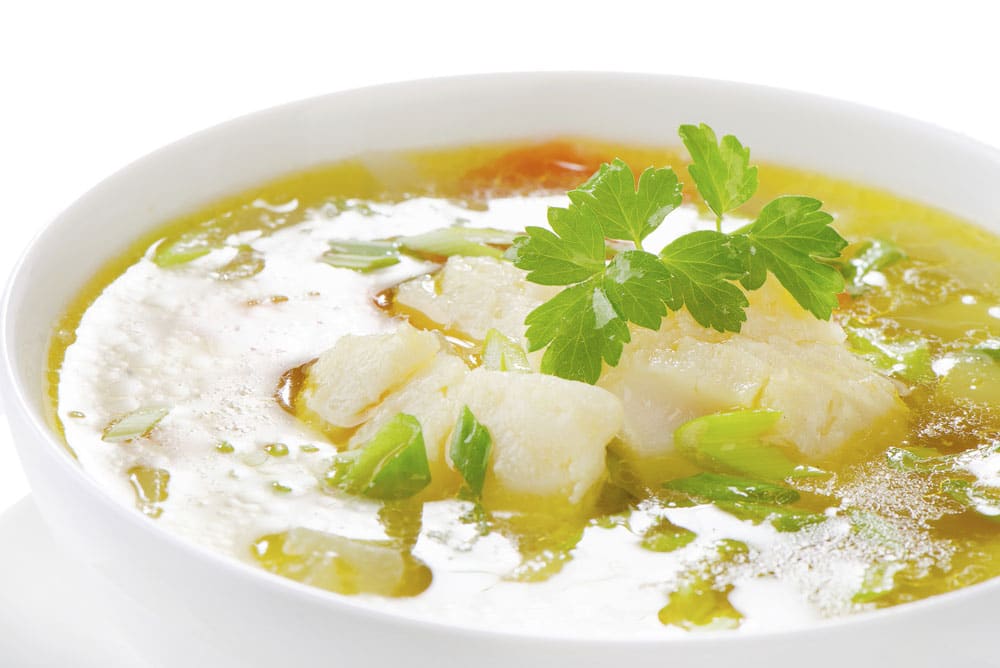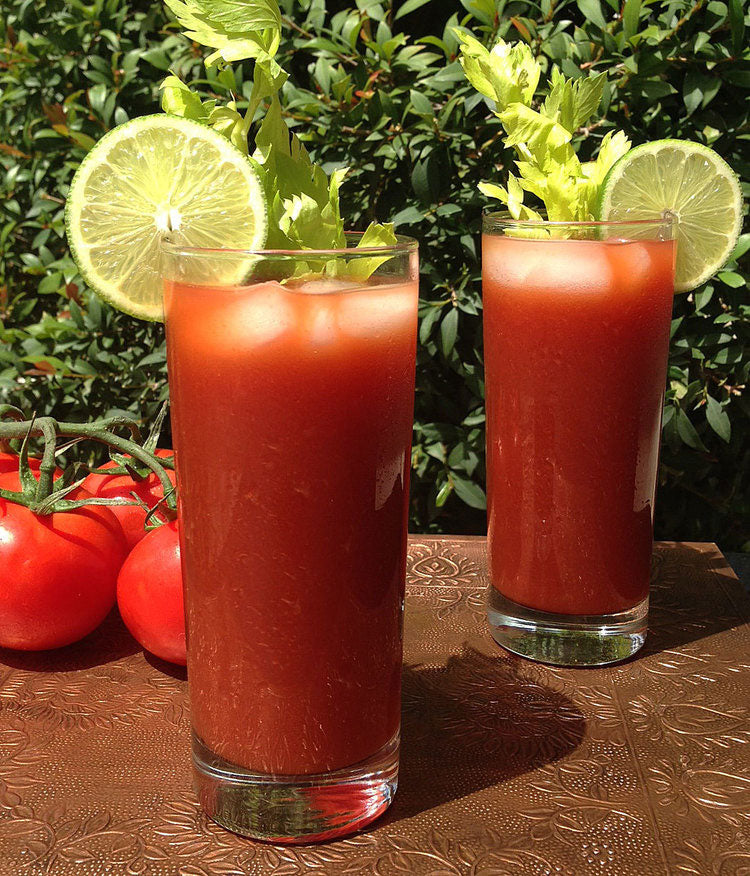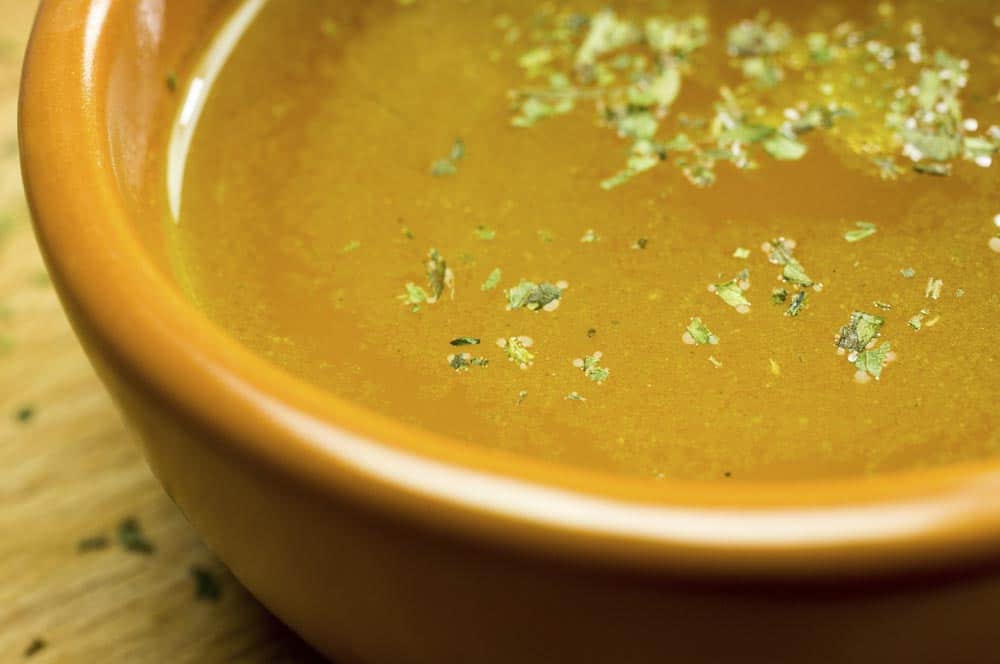
Delicious and Nourishing Fish Bone Broth Recipe
Whether you prefer not to eat land animals or you’re looking for something new to add to the mix, fish bone broth does not disappoint. It’s just as nutrient dense and equally as delicious.
Fish Bone Broth: Equally Nutritious & Delicious You know I’m a big fan of bone broth. I call it liquid gold. Because it’s loaded with minerals, gut healing nutrients, and collagen for healthy skin, hair, bones, and joints. Need I say more! Now, when you think of bone broth, chances are you think of beef or chicken. But, have you ever tried fish bone broth? If not, you’re missing out!
How to Make Fish Bone Broth I love the heartiness of beef bone broth and the rich, warm flavor of chicken or turkey bone broth. But some days, I’m in the mood for a light, delicate broth—and that’s when I head straight for the kitchen and cook up a batch of fish bone broth. Similar to beef or chicken, fish bone broth is made by simmering fish carcasses or heads with water, veggies, and spices. However, since fish bones are smaller and more delicate, you can draw out the nutrients in much less time. In fact, some recipes require as little as one hour.Which means you get all the same benefits in a fraction of the time. Yes, please!
Fish bone broth has a lovely flavor if you drink it straight from the mug, and it also makes a wonderful base for soups—especially Asian-influenced soups. And in addition to the wrinkle-blasting collagen and fat-burning nutrients you get from bone broth, fish bone broth gives you a healthy dose of iodine to keep your thyroid happy.
Benefits of Fish Bone Broth We’ve already covered the time factor. Which is a huge bonus in my book. And fish bone broth contains many of the same nutrients as chicken and beef, such as phosphorus, magnesium, silicon, sulfur, calcium, trace minerals, and collagen to name a few. Which is great news for pescetarians! But fish bone broth excels when it comes to iodine–a mineral not found in the bones of land animals. And iodine is essential for optimal thyroid health (among many other things). This is important since thyroid cancer has continuously increased around the world in the last decade. It has become the most common hormone-related cancer. And has skyrocketed to the fifth most common cancer among women. Yikes!
However, according to a recent meta-analysis of over 2200 cases, a higher iodine intake was shown to be a protective factor against thyroid cancer. And getting more iodine in your diet is as simple as eating more fish and making bone broth with the leftover heads or carcasses. It’s also worth mentioning that a healthy thyroid is closely linked to your metabolism. And that means we’re talking about your waistline.
Quality Matters Not all fish is created equal. These days we are faced with the option of wild or farmed fish. In most cases, wild fish is best. And fish that is caught in a sustainable fashion. In addition, it’s best to use a non-oily fish for making broth to prevent the oils from becoming rancid during cooking. Therefore, according to the Monterey Bay Aquarium Seafood Watch, the most sustainable non-oily options are wild Pacific cod, rockfish, or sole. So next time you’re at the store, try buying a whole, intact fish instead of a pre-cut portion. Or, if that doesn’t work, you can ask your fishmonger to save the heads and carcasses for you.
The cost is often very low (if not free). Or simply ask your butcher to save carcasses for you—or visit good fish restaurants, which often buy whole fish, and ask if they can supply you with bones. It’s a win-win situation for everyone: Your suppliers can recycle bones they’d otherwise toss out, and you get those bones for a very small price—or often even for free). How’s that for a good deal all around?
Here’s my simple fish bone broth recipe. Give it a try, and I think you’ll fall in love with it. Bon appetit!
Just be sure to use bones from a non-oily fish, because the oils in fatty fish like salmon can develop an off taste if they cook for a long time. Also, make your fish bone broth on the stove rather than in a slow cooker, because it cooks very quickly.
Fish Bone Broth
Prep Time: 15 minutes • Cook Time: 1 hour 15 minutes Yield: Varies depending on pot size; these ingredients are sufficient for 1 gallon of broth- 5–7 pounds fish carcasses or heads from large non-oily fish such as halibut, cod, sole, rockfish, turbot, or tilapia (Non-oily fish is necessary because the fish oils in fatty fish such as salmon become rancid in cooking).
- 2 tablespoons ghee
- 1–2 carrots, scrubbed and coarsely chopped
- 2 ribs organic celery, including leafy part, coarsely chopped
- 2 medium onion, coarsely chopped
- Purified water to just cover the bones in the pot
- 1 bay leaf
- 1–2 whole cloves
- 2 teaspoons peppercorns
- 1 tablespoon bouquet garni or a small handful of fresh parsley and 4–5 stems fresh thyme
Wash the fish and cut off the gills if present. In a large stockpot, melt the ghee over medium-low to low heat. Add the carrots, celery, and onion and cook, stirring occasionally, for about 20 minutes. Add the fish and enough water to cover it by 1”. Increase the heat to medium and bring the water to a bare simmer. Use a shallow spoon to carefully skim the film off the top of the broth.
Add the bay leaf, cloves, peppercorns, and bouquet garni and reduce the heat to low. Cook at a bare simmer for about 50 minutes, uncovered or with the lid askew. Continue to skim the surface as needed. When the broth is done, remove the pot from the heat. Using tongs and/or a large slotted spoon, remove all the bones. Pour the fish bone broth through a fine mesh strainer and discard the solids. Let cool on the counter before refrigerating.
You can skim off the fat easily after the broth is chilled if desired. When chilled, the broth should be very gelatinous. The fish bone broth will keep for 5 days in the refrigerator and 3 or more months in your freezer.
Enjoy!









